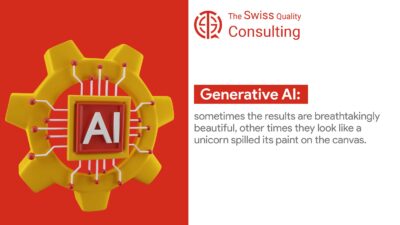Decoding the Intricacies of Nonverbal Communication in Professional Settings
As business executives, mid-level managers, and entrepreneurs, our success is not solely determined by the spoken word but also by the unspoken cues that govern our interactions. The quote, “One of the most surprising forms of nonverbal communication is the way we automatically adjust the amount of time we spend looking into another’s eyes as a function of our relative social position,” sheds light on the fascinating dynamics of nonverbal communication and its profound impact on our professional relationships.
The Unspoken Language of Gaze: A Reflection of Social Hierarchy
Imagine two colleagues locked in a conversation: one holds a steady gaze, their eyes conveying confidence and openness, while the other darts nervously, their fleeting eye contact suggesting uncertainty or deference. Within the tapestry of nonverbal communication, this seemingly simple act of eye contact becomes a powerful, nuanced language shaping the dynamics of our professional relationships.
While seemingly insignificant, the duration and intensity of eye contact subtly broadcasts our perceived social position. A firm, sustained gaze projects confidence, dominance, and assertiveness, while fleeting glances or averted eyes can signal submission, nervousness, or lack of engagement. Understanding this unspoken language is crucial for navigating the complexities of professional interactions.
Consider these scenarios:
The Job Interview: Maintaining steady eye contact demonstrates interest, attentiveness, and respect, while looking away can portray disengagement or insecurity.
Delivering a Presentation: Confident eye contact with your audience builds rapport, trust, and authority, while avoiding eye contact can weaken your message and impact.
Negotiations: A direct gaze can project firmness and conviction, while averted eyes might suggest uncertainty or a willingness to concede.
Decoding the nuances of eye contact goes beyond a simple binary of dominance and submission. Cultural differences, individual personalities, and situational context all play a role. However, developing awareness of this powerful tool empowers you to:
Project the desired image: Whether seeking to convey confidence, collaboration, or empathy, adjust your eye contact accordingly.
Read the unspoken language: Observe how others use eye contact to gain insights into their intentions and emotional states.
Build stronger connections: Authentic, intentional eye contact fosters trust, rapport, and understanding in your professional interactions.
Remember, effective communication transcends words. By mastering the silent dialogue of eye contact, you can elevate your professional presence, navigate complex situations with confidence, and forge connections that build lasting success.
The Power Dynamics: Executive Leadership and Effective Communication
Executive leaders often find themselves in positions of authority, and their gaze, intentionally or subconsciously, reflects this elevated status. Maintaining prolonged eye contact communicates confidence, authority, and a sense of assured leadership. In this context, nonverbal communication becomes a strategic tool for effective leadership, fostering a culture of trust and unity within the organization.
Executive coaching services play a pivotal role in honing these nonverbal communication skills, ensuring leaders project the desired image and effectively connect with their teams.
Mid-Level Management: Striking a Balance in Nonverbal Dialogue
For mid-level managers, the nuances of nonverbal communication take on a different significance. Balancing authority with approachability becomes crucial. The duration of eye contact must convey both confidence and receptiveness, fostering an environment where team members feel heard and valued.
Effective communication, both verbal and nonverbal, becomes a cornerstone for mid-level managers to bridge the gap between upper management and the broader workforce.
Entrepreneurial Relationships: Building Connections through Gaze
Entrepreneurs, often navigating dynamic landscapes, rely heavily on their ability to build relationships. In the entrepreneurial world, nonverbal cues can make or break deals. Understanding the impact of eye contact on perceived trust and credibility is paramount. Entrepreneurs must leverage this silent language to build lasting connections with partners, clients, and investors.
Projecting Inclusivity: Nonverbal Communication in Diverse Teams
As businesses embrace diversity, the importance of nonverbal communication in fostering inclusivity cannot be overstated. Recognizing the cultural variations in the interpretation of eye contact is vital. Leaders and managers must adapt their nonverbal cues to create an environment where every team member feels respected and understood.
Management consulting insights often emphasize the need for cultural sensitivity, ensuring that nonverbal communication aligns with the values of a diverse workforce.
Conclusion: Mastering the Silent Dialogue
As we navigate the intricate landscape of professional relationships, the silent dialogue of nonverbal communication remains a potent force. Understanding the impact of gaze duration on social dynamics empowers us to communicate effectively, build trust, and foster collaboration. Whether in executive boardrooms, mid-level management meetings, or entrepreneurial pursuits, mastering the art of nonverbal communication is a skill that transcends spoken language, shaping the success of businesses and professional relationships.
#EffectiveCommunication #NonverbalCommunication #ExecutiveCoaching #BusinessSuccess #ManagementConsulting #GenerativeAI #LeadershipSkills #ProjectManagement























